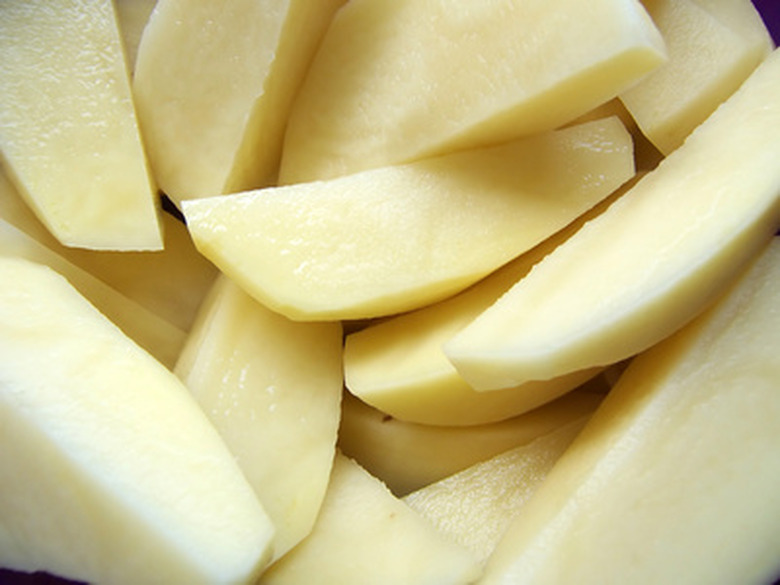Home Remedies For Gnats In House Plants
Fungus gnats love to bug house plants. These insects (Bradysia spp.) are tiny, mosquito-like nuisances. While they tend to cluster in clouds around your plants, they do not bite and are considered harmless, though annoying. They can, however, transfer root rot or foliage pathogens from a sick plant to a healthy one. While you can use insecticides or commercial sticky traps to get rid of fungus gnats, there also are home remedies that can control them.
Water Less
According to Colorado State University Extension, the easiest way to get rid of fungus gnats is to let your house plant's soil dry out between waterings. Do not water again until the top 1 or 2 inches of soil are dry. This will keep the eggs and larvae from hatching, plus dry soil will not attract the egg-laying females. Removing any decaying bulbs or roots also will deter the gnats.
- Fungus gnats love to bug house plants.
- According to Colorado State University Extension, the easiest way to get rid of fungus gnats is to let your house plant's soil dry out between waterings.
Potato Slices
Placing potato slices on top of your house plant's soil will attract fungus gnat larvae. The Minnesota Master Gardeners recommend leaving the slices on the soil for four days. Look for the 1/4-inch larvae with black heads on the potato's surface, then remove the slices (throw them away; do not compost) with the larvae inside.
Vinegar
Vinegar traps may help catch the fungus gnats plaguing your plant. Rick Steinau of AskTheExterminator.com suggests placing vinegar in a lidded jar. Poke tiny holes in the lid with a needle or awl; the holes need to be as small as possible. Put a layer of peanut butter on the inside of the lid. When the gnats enter the jar, they will be trapped, drown in the vinegar or stuck in the peanut butter.
- Placing potato slices on top of your house plant's soil will attract fungus gnat larvae.
- Look for the 1/4-inch larvae with black heads on the potato's surface, then remove the slices (throw them away; do not compost) with the larvae inside.
Citronella
Gnats are repelled by the scent of citronella in natural insect wipes. Wipe your pot thoroughly, including the edges with a wipe. Leaving wipes near the pot or placing strips on the top of the soil may also keep the insects at bay.
